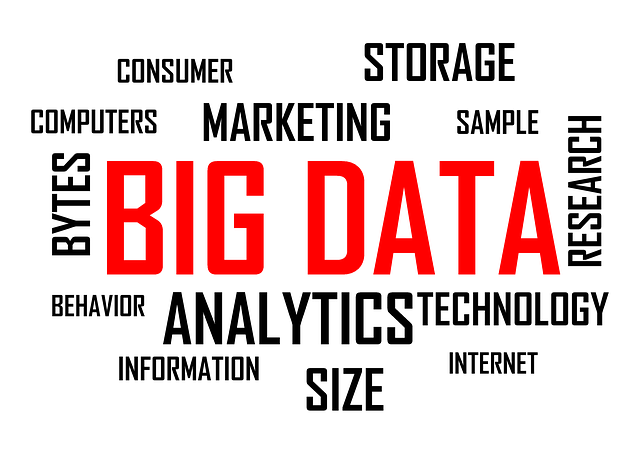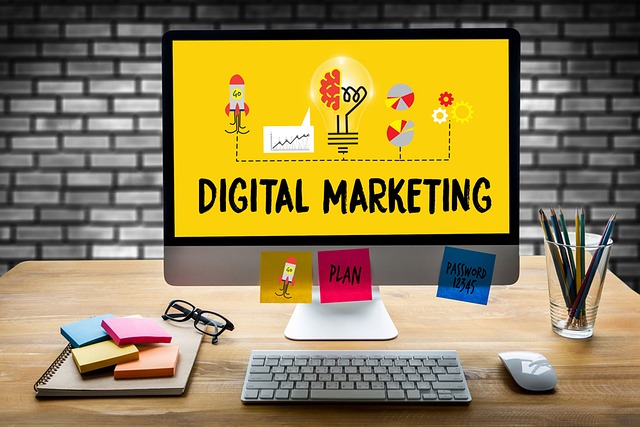In today’s fast-paced digital landscape, marketing automation has become an essential component for businesses looking to scale and streamline their efforts. Whether you’re a small startup or an established enterprise, leveraging automation tools can save time, improve efficiency, and ultimately drive more sales. This article explores some of the leading marketing automation platforms like HubSpot, Marketo, and Mailchimp, and offers insights on how to implement automation effectively within your digital strategy.

What is Marketing Automation?
Marketing automation refers to the use of software to automate repetitive marketing tasks, such as email campaigns, social media posting, lead generation, customer segmentation, and data analysis. By automating these processes, businesses can deliver more personalized and timely messages to their audiences while optimizing their overall marketing efforts. Automation also reduces manual work, freeing up valuable time for marketers to focus on strategy and creativity.
Why Marketing Automation Matters
Efficiency and Time Savings
Automating tasks like sending emails, posting on social media, and nurturing leads ensures that teams can focus on high-value tasks.
Personalization at Scale
With automation, you can deliver tailored content to your audience based on their behaviors and preferences, which improves engagement and conversion rates.
Improved Lead Management
Automating lead nurturing allows businesses to score and prioritize leads, ensuring that sales teams focus on the most promising opportunities.
Better Analytics and Reporting
Automation tools often come with built-in analytics that help marketers track campaign performance, understand customer behavior, and adjust strategies accordingly.

Leading Marketing Automation Platforms
1. HubSpot
Overview: HubSpot is one of the most popular all-in-one marketing automation platforms, known for its comprehensive features. It’s ideal for businesses of all sizes, especially those looking for a full-stack marketing solution.
Key Features
Lead Generation and Nurturing
HubSpot offers tools for capturing leads through forms, landing pages, and pop-ups. It also allows businesses to automate lead nurturing workflows based on user behavior.
Email Marketing
HubSpot’s email marketing tools allow you to send personalized emails, segment your contact list, and track performance through detailed analytics.
CRM Integration
HubSpot seamlessly integrates with its CRM, making it easy to track customer interactions, sales progress, and segment contacts based on their lifecycle stage.

Analytics and Reporting
You can determine whether initiatives are effective and where changes may be made with the aid of comprehensive reports.
How to Implement HubSpot Effectively
Start with CRM Setup: To centralize customer data and customize marketing campaigns, integrate your CRM with HubSpot.
Segment Contacts
Use HubSpot’s segmentation features to tailor your messaging based on customer behavior and preferences.
Automate Lead Nurturing
Set up workflows to nurture leads based on where they are in the buyer’s journey, ensuring timely follow-ups and relevant content.
Marketo (by Adobe)
Overview: Marketo is a robust and scalable marketing automation platform, typically favored by medium to large businesses. It’s especially powerful for B2B marketing, providing tools to manage the entire lead lifecycle.

Key Features:
Lead Management
Marketo excels at lead scoring, tracking, and nurturing, making it a strong choice for B2B marketers who want to manage complex lead pipelines.
Multi-Channel Campaigns
Marketo supports email marketing, social media, paid ads, and even offline events, ensuring that marketers can reach their audience through multiple touchpoints.
Personalized Content:
You can create personalized campaigns that adapt based on user behavior, such as website visits, email opens, or form submissions.
Advanced Analytics:
Marketo provides in-depth analytics and reporting, helping you measure the effectiveness of every campaign and improve ROI over time.
How to Implement Marketo Effectively
Leverage Lead Scoring:
Implement Marketo’s lead scoring model to prioritize leads based on their engagement with your content, ensuring that sales teams focus on high-quality prospects.
Nurture Across Channels
Use Marketo’s multi-channel capabilities to engage leads through email, social media, and targeted ads, ensuring consistency across touchpoints.
Optimize with A/B Testing: Take advantage of Marketo’s A/B testing features to test different versions of emails and landing pages to optimize for higher conversion rates.

Mailchimp
Overview: Mailchimp is widely known for its user-friendly interface and powerful email marketing capabilities. While it started as an email marketing tool, it has expanded to become an accessible marketing automation platform suitable for small and mid-sized businesses.
Key Features:
Email Campaigns
Mailchimp’s core offering revolves around creating visually appealing email campaigns, with a focus on ease of use.
Automation Workflows
Mailchimp provides a variety of automated workflows, including welcome emails, abandoned cart emails, and re-engagement campaigns.
Segmentation and Personalization
Users can segment their email list based on behavior, location, purchase history, and more to deliver personalized content at scale.
Reports and Analytics
Mailchimp offers in-depth insights into email performance, audience growth, and campaign engagement.
How to Implement Mailchimp Effectively:
Create Triggered Campaigns
Use Mailchimp’s automation features to send triggered emails based on customer actions, such as signing up for your newsletter or abandoning a shopping cart.
Leverage Segmentation
Segment your email list to send targeted messages to specific audience groups, improving open rates and conversions.
Use Analytics for Optimization:
Regularly monitor your campaigns’ performance using Mailchimp’s reporting tools and make adjustments to optimize future emails.
How to Effectively Implement Marketing Automation
Regardless of the platform you choose, here are some best practices to ensure successful implementation of marketing automation:
Define Clear Goals
Before diving into automation, set clear objectives such as increasing lead generation, improving customer retention, or boosting sales. These goals will guide your automation strategy and help measure success.
Map Out Customer Journeys
Understanding your customer’s journey is critical to creating effective automation workflows. Map out the stages (awareness, consideration, decision) and align your campaigns to engage customers at the right time with the right message.
Start Small and Scale
Begin with simple automations (e.g., email sequences, welcome messages) and gradually scale as you learn more about your customers’ behaviors and preferences.
Test and Optimize:
Continuously test different aspects of your campaigns (e.g., subject lines, CTAs, content) to understand what works best and refine your strategy accordingly.
Monitor Performance:
Use the analytics and reporting features available within automation tools to track the performance of your campaigns. Pay attention to metrics such as open rates, click-through rates, and conversion rates to optimize your marketing efforts.

Conclusion
Marketing automation tools like HubSpot, Marketo, and Mailchimp have become indispensable for businesses aiming to stay competitive in today’s digital marketing landscape. By automating repetitive tasks and personalizing customer experiences, these platforms help companies deliver relevant, timely, and effective marketing messages while improving overall efficiency.
Implementing marketing automation doesn’t have to be overwhelming. Start by selecting the right tool based on your business needs, map out your customer journey, and scale your automation efforts as you gather more insights into what works best for your audience. With the right strategy and tools, marketing automation can be a game-changer in boosting your digital marketing success









